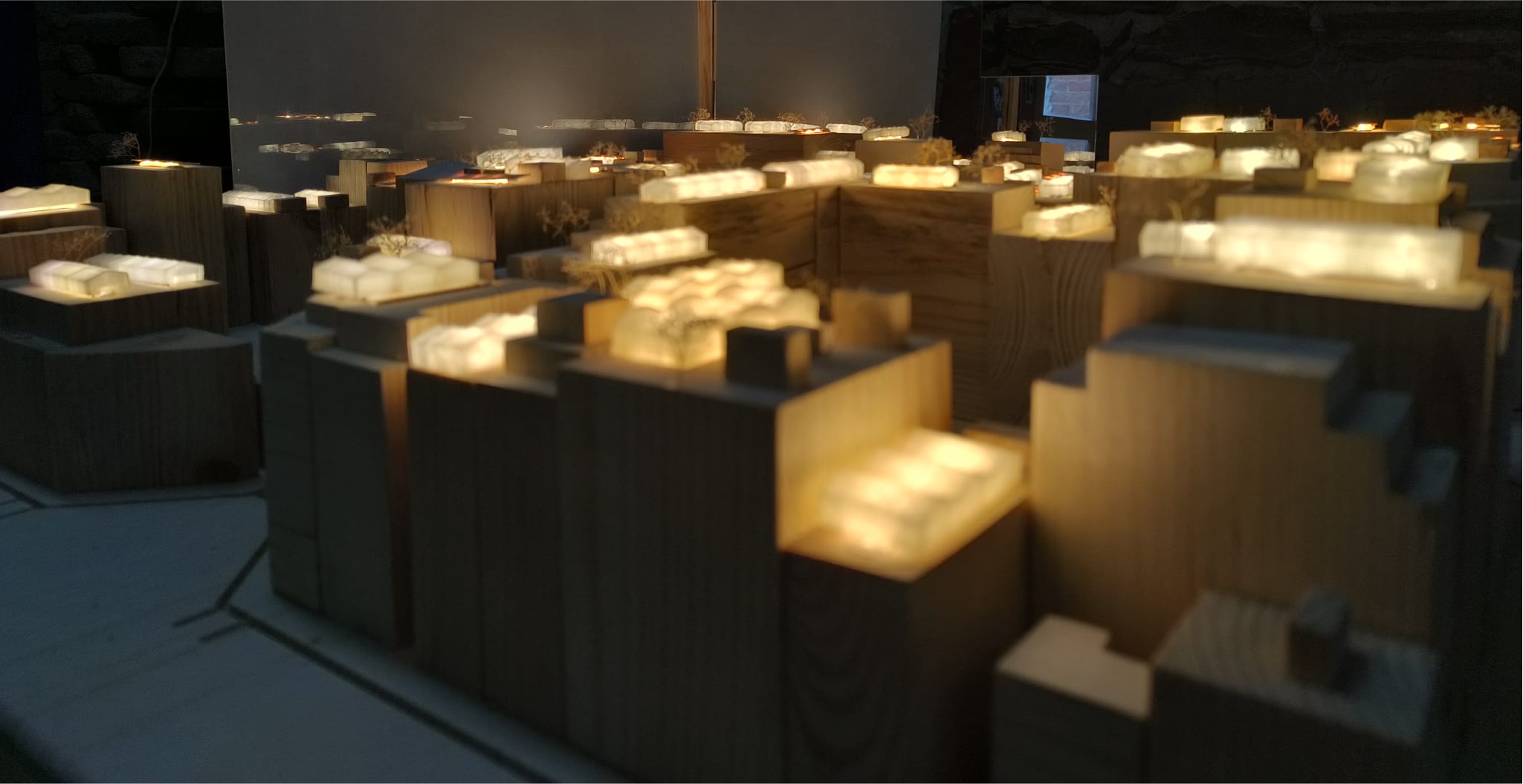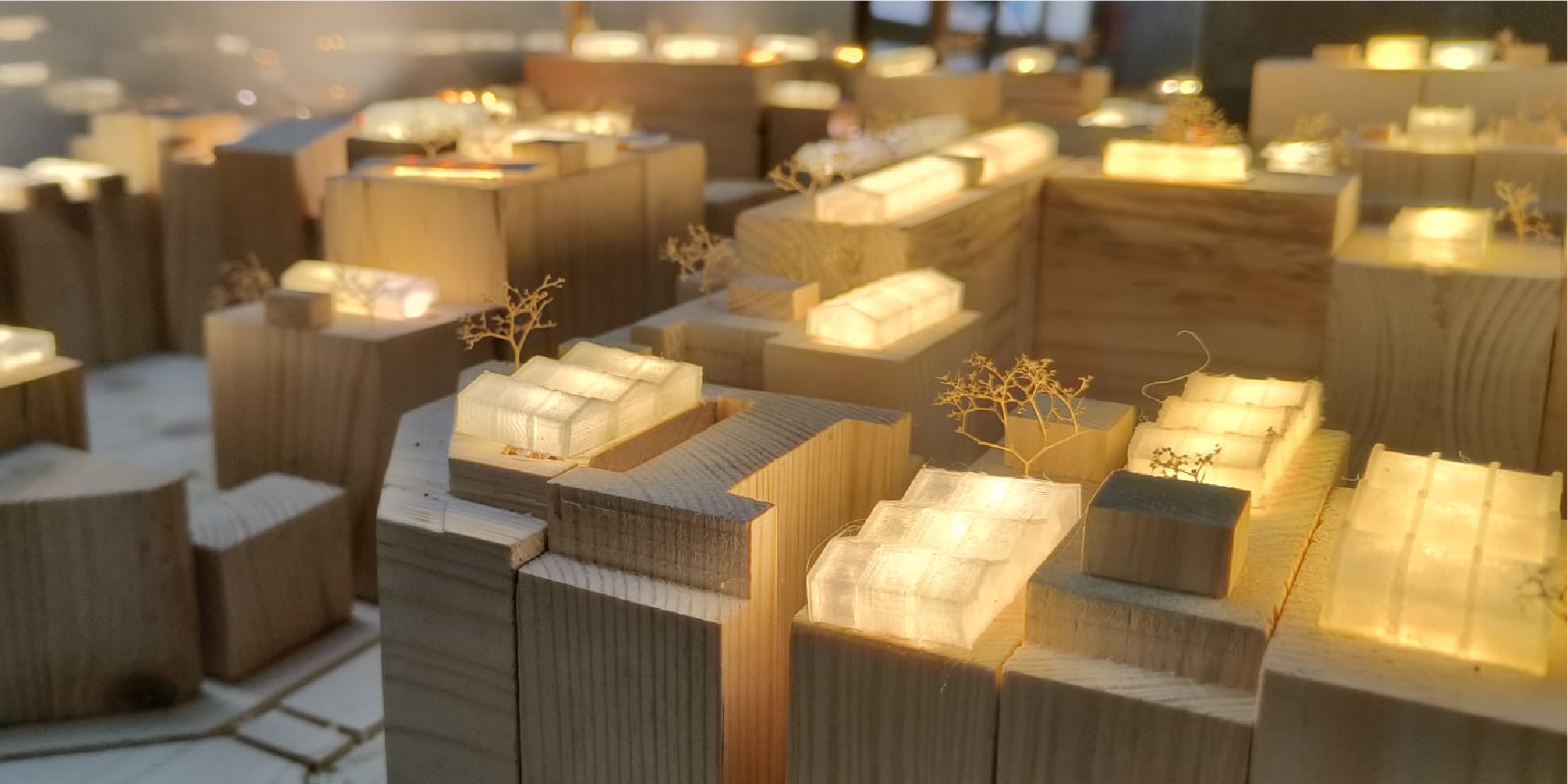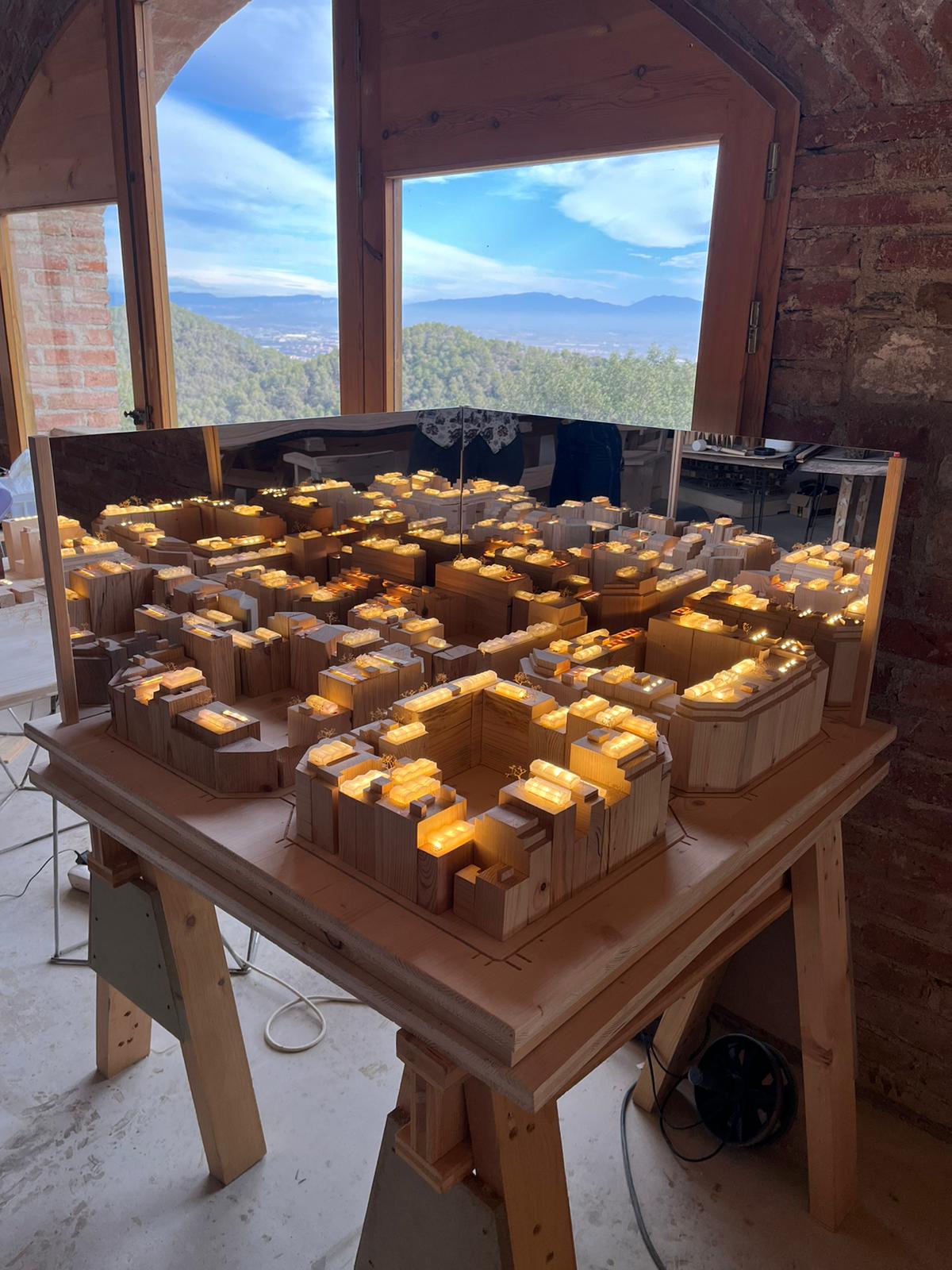This terms collaborative studio project briefed the students at Valldaura to prepare material for the upcoming exhibition, Macquina Climatica, which presents a catalog of proposals for urban agriculture within the metropolitan area of Barcelona. One such proposal uses a scale model to demonstrate what rooftop urban agriculture in the city might look like, how it might work and what opportunities it might present for the future of Barcelona as a Bio-city.
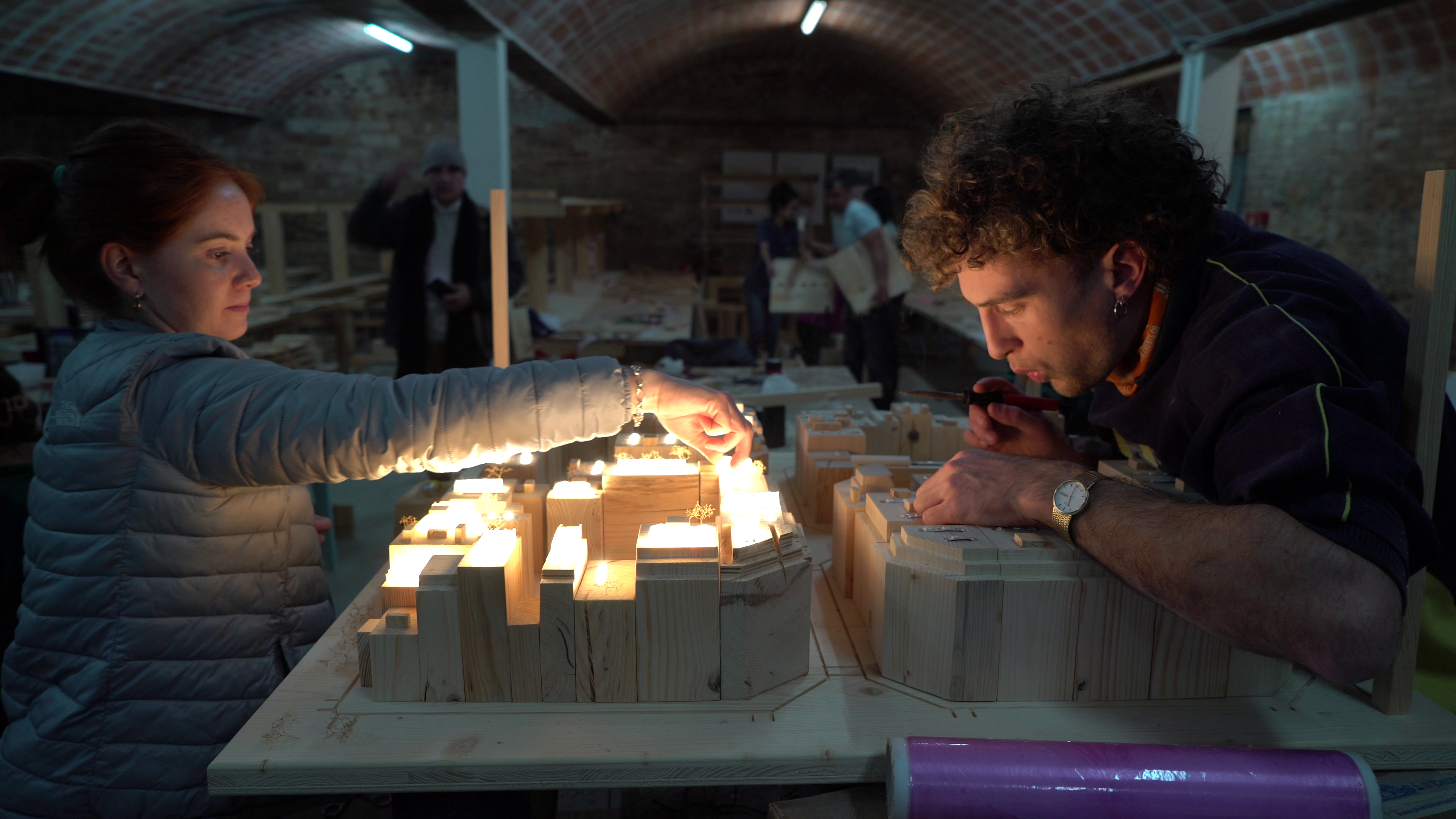
Our scale model sits alongside other objects in the exhibition fabricated from Colserola park timber, and accompanies independent pieces – a shelving unit, dining table, chairs, bench and vertical farming trays – to propose a new vision of urban agriculture to the general public. In the production of our block model, a broad range of the tools, processes and materials available in the Green Fab lab were utilised. This process enabled us to make 100% of the material of the model in-house, and provided us the vital experience with the machinery and material that are core to the program here at Valldaura Labs.
The following is an account of our design process and an overview of the process, approach and outcome of each of the fabrication tools used on the project.
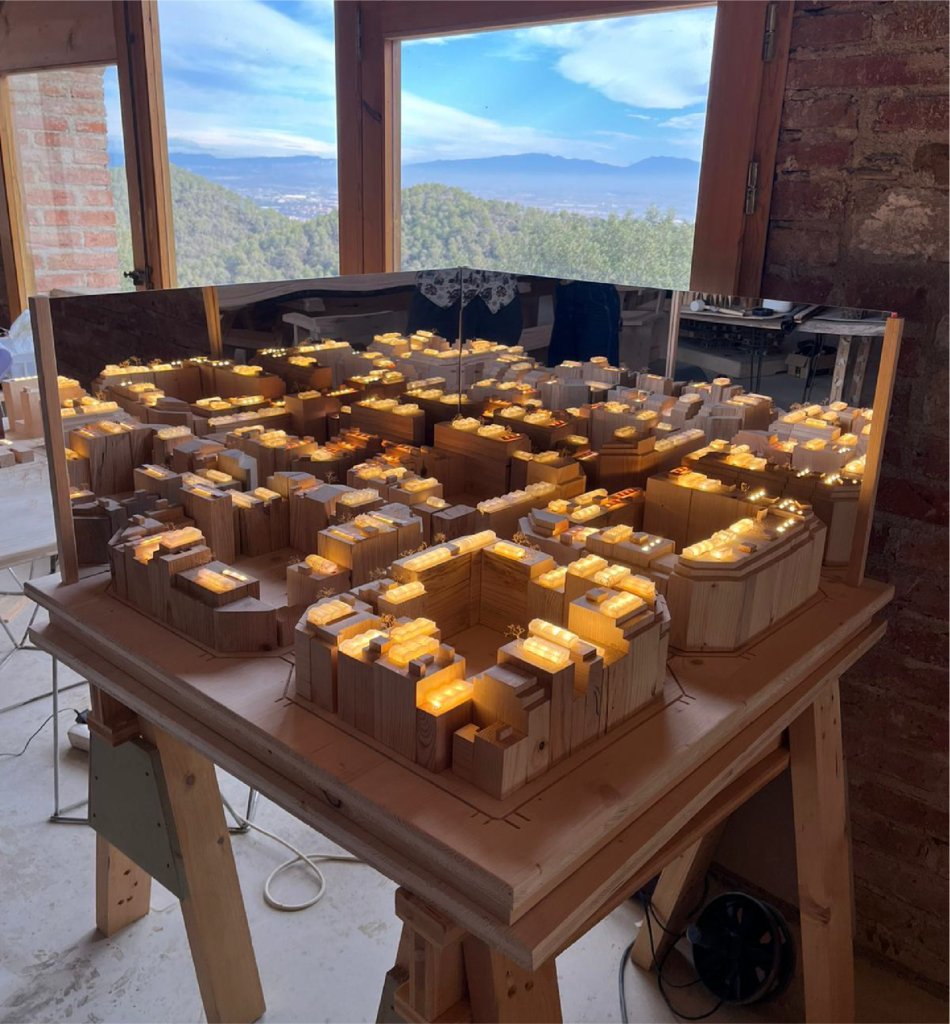
The 1:300 scale model of an 4×4 Eixample block uses mirrors to repeat the vision of urban agriculture atop Barcelona rooftops. The model is predominantly comprised of Pinus Halepensis timber, destined for waste from the production of the other components in the exhibition. Using solid wooden blocks to create building masses gives the model a unique aesthetic, as welll as a narrative link to the rest of the exhibition and indeed to the broader ambition of our course – to be smart, resourceful and thoughtful with materials, utilising waste where possible and creating innovative ways to find use for valuable, carbon-locking material.
Whilst other items in the exhibition explored timber fabrication on a bigger-scale, our model gave the unique challenge of processing Pine into highly detailed, small pieces – a task which pushed the use of our carpentry tools and facilities at the Valldaura Fab Lab: a workshop more generally geared up for processing large, building scale timber components.
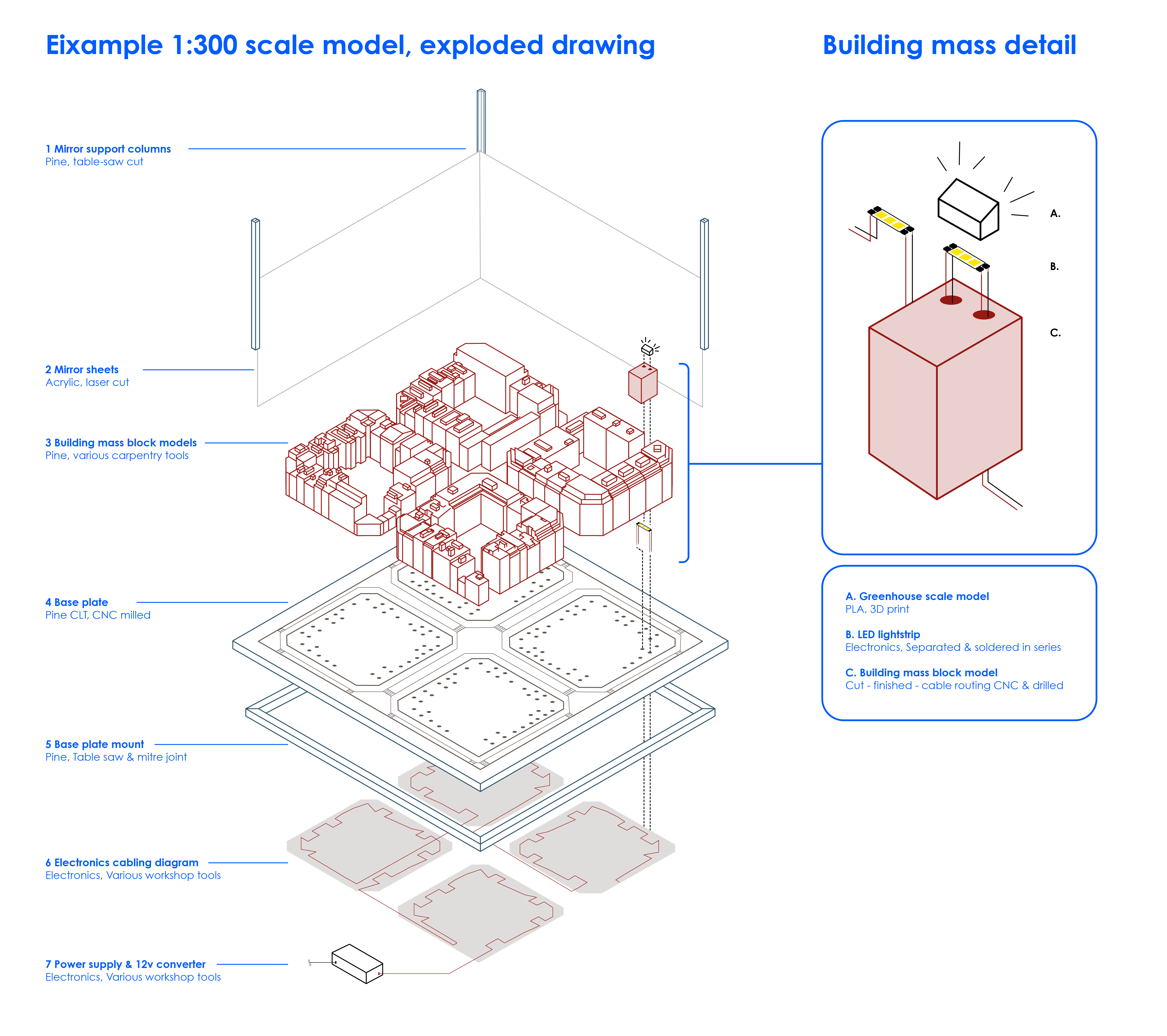
Firstly, we prototyped a variety of methods to fabricate the building components of our model, exploring a variety of materials and processes available to us at Valldaura. From this exploration, the method of solid building mass blocks was selected both for its aesthetic and opportunity to utilise waste material.
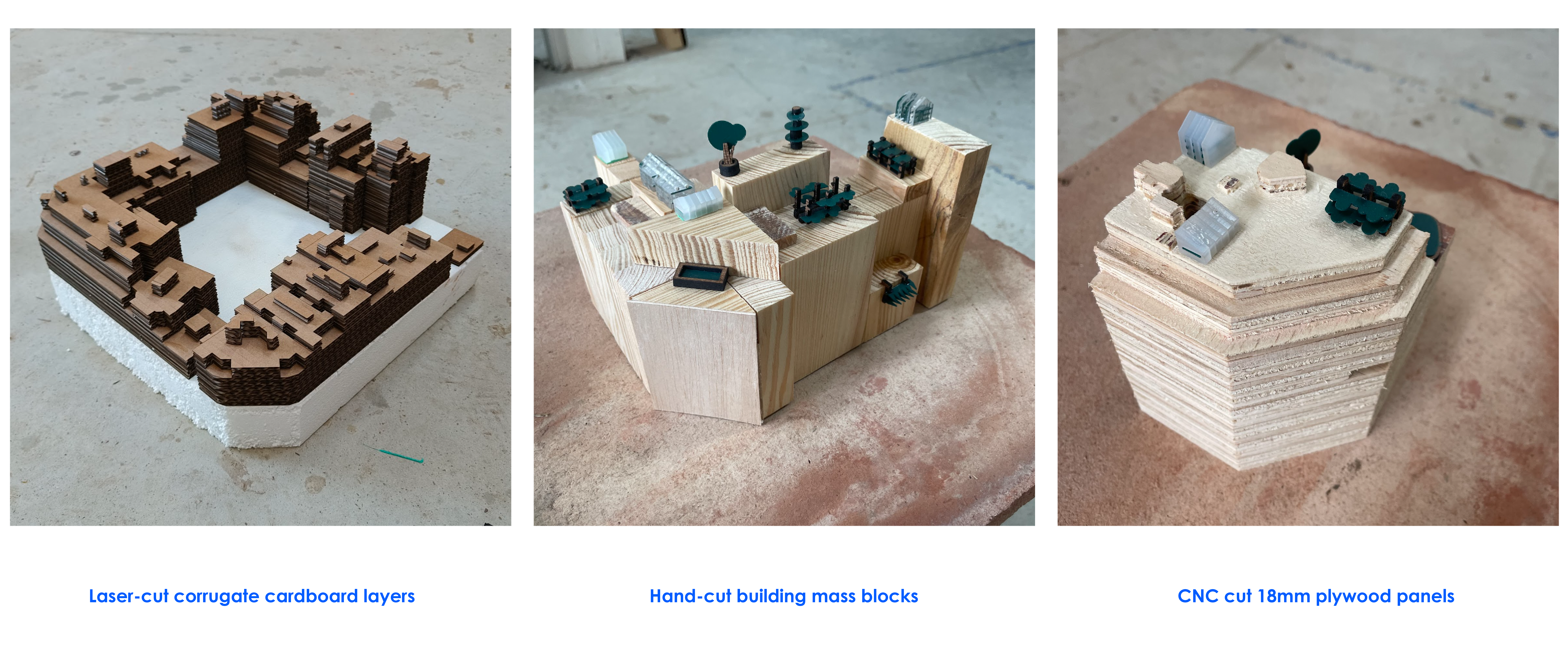
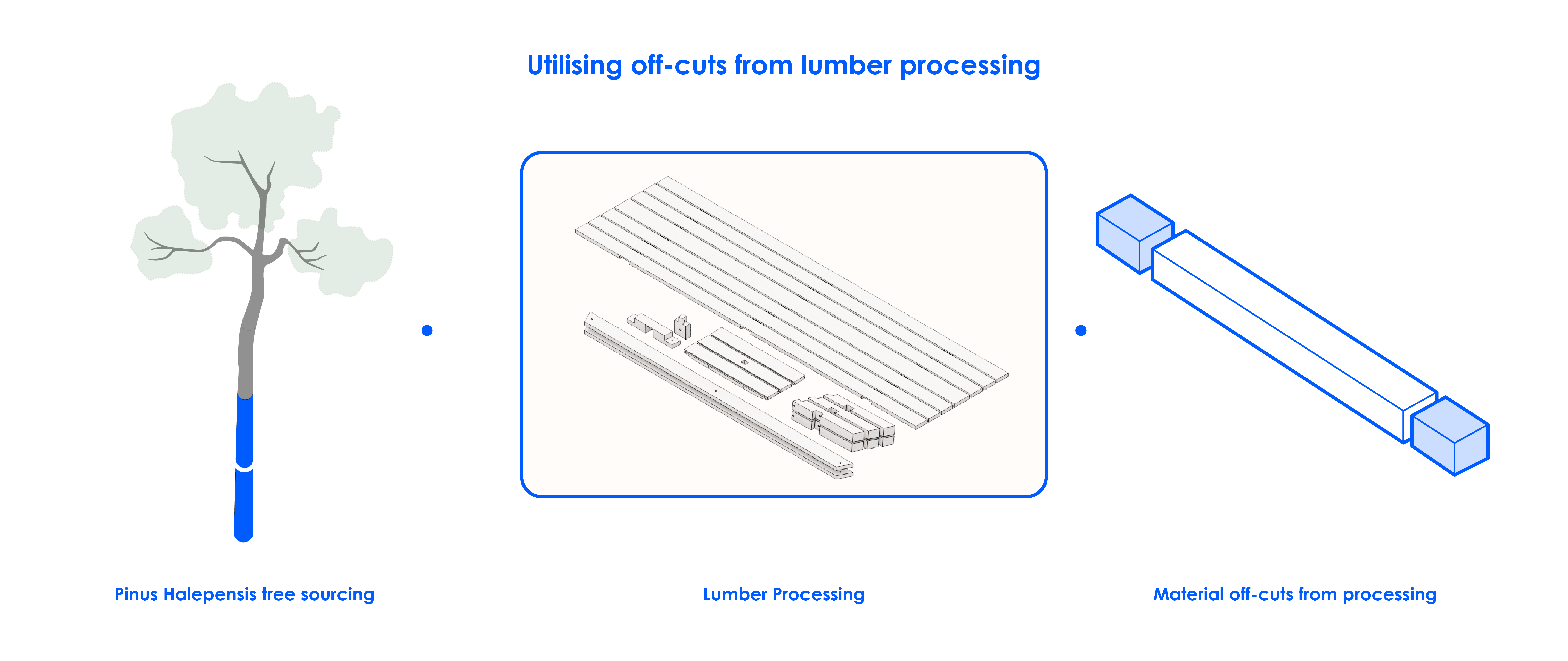
Central to the philosophy of Valldaura Labs is to minimise waste, and to utilise any unavoidable waste that is produced by the process. Even with these methods, the milling & wood processing process in our workshop produces around 50% waste material from our original timber stock – through a combination of off-cuts, sawdust waste and prototyping errors. A key concept of our model was to utilise such waste in the fabrication of our blocks, rather than using virgin material.
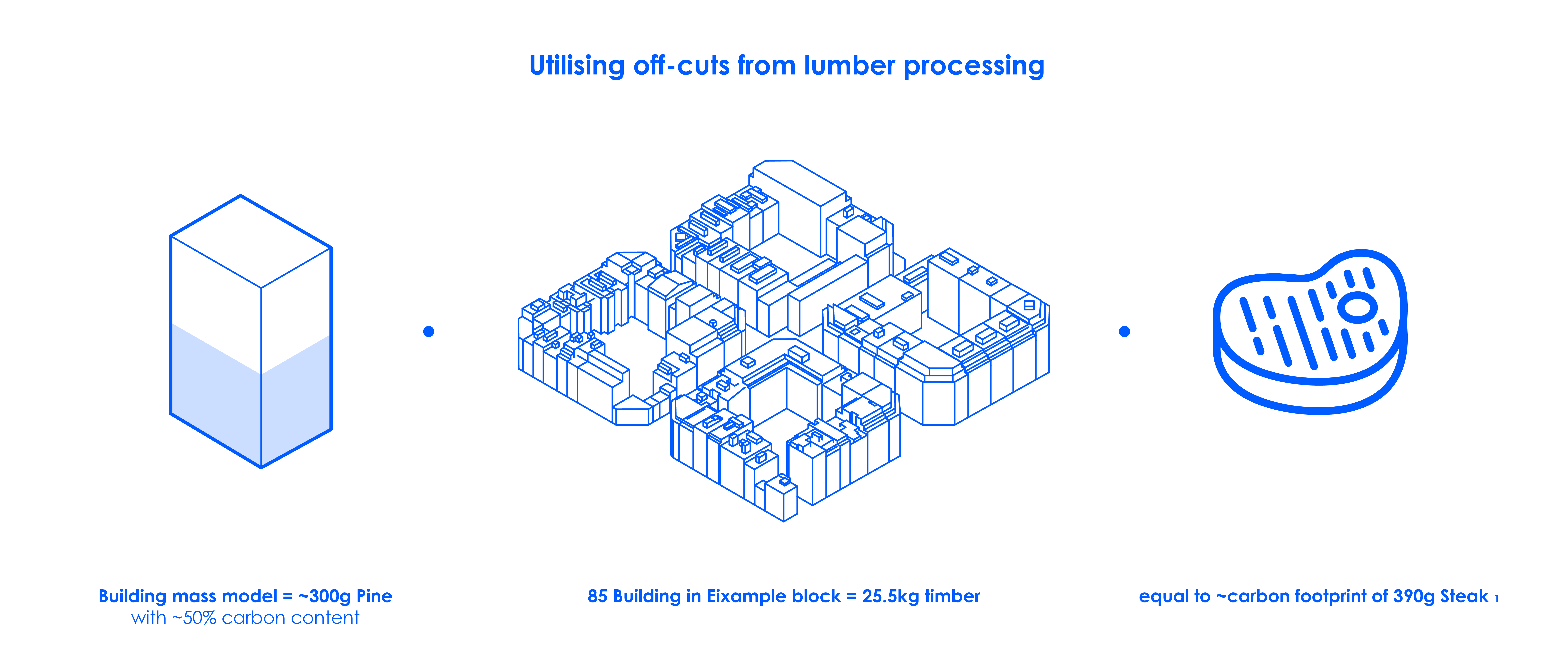
With 85 unique building masses to rationalise from their real-life counterparts, process from larger pieces of timber, add roof details to and to prepare to carry electronics, our ability to organise and execute fine fabrication details were tested. The process started by rationalising the reference Eixample address into simplified blocks before documenting a detailed cutting list to refer to later in the workshop.
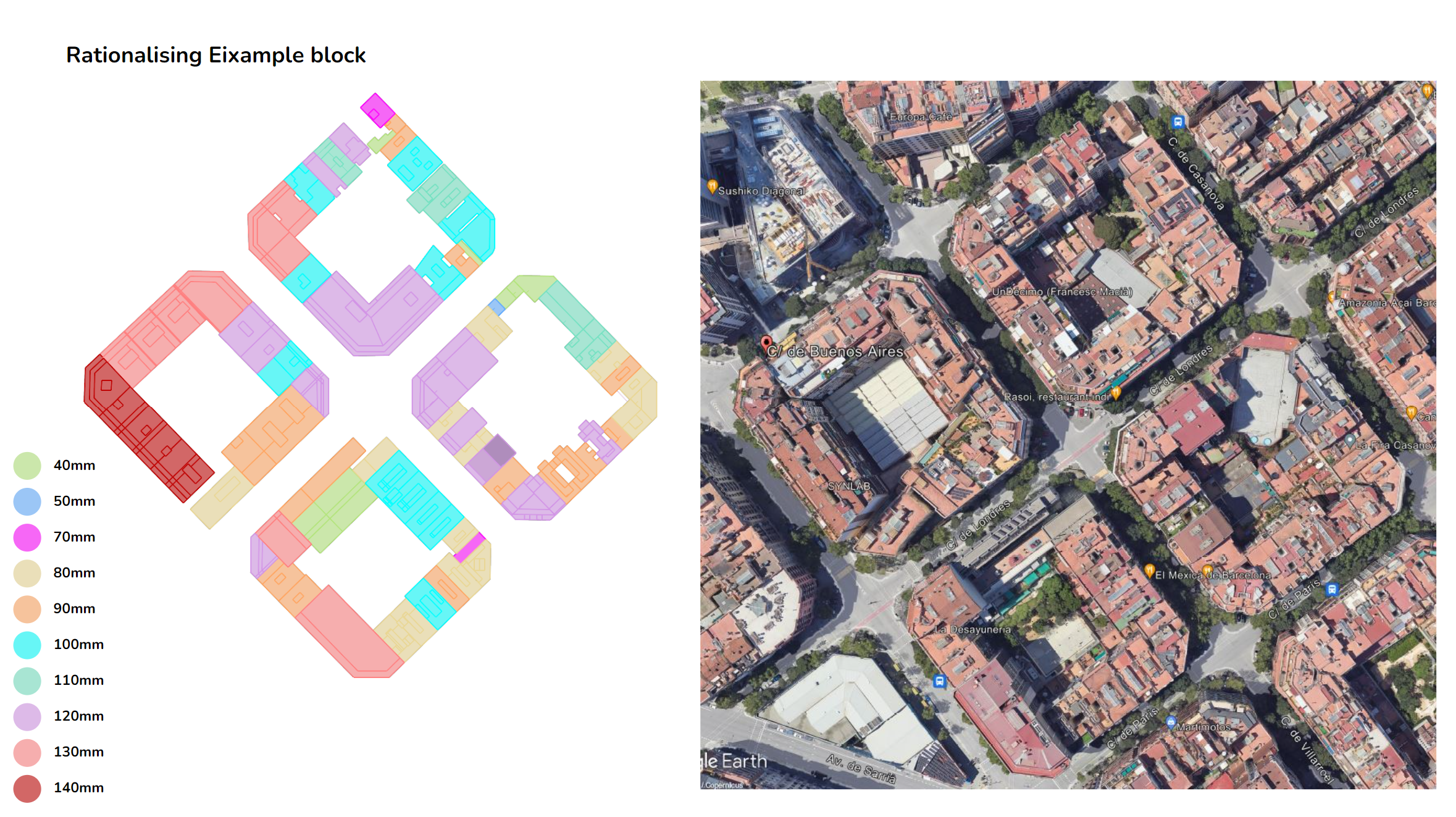
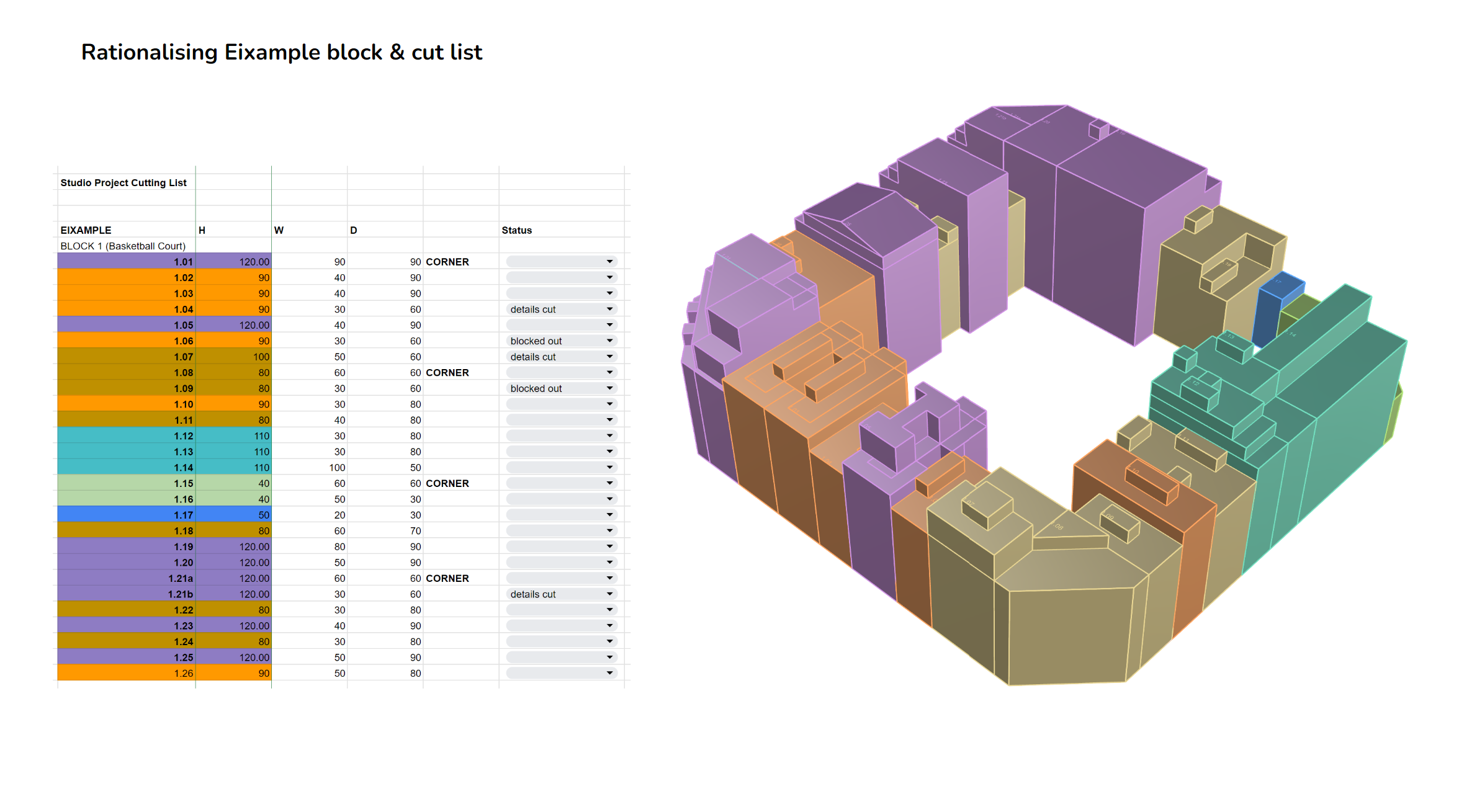
Once our process and cutting list were finalised, we started the process of turning waste timber into highly detailed and accurate portrayals of building blocks at 1:300 scale. This process involved sourcing material, selecting appropriate pieces for our catalog of blocks, cutting pieces down to size before adding fine details and finishing blocks ready for the main assembly.
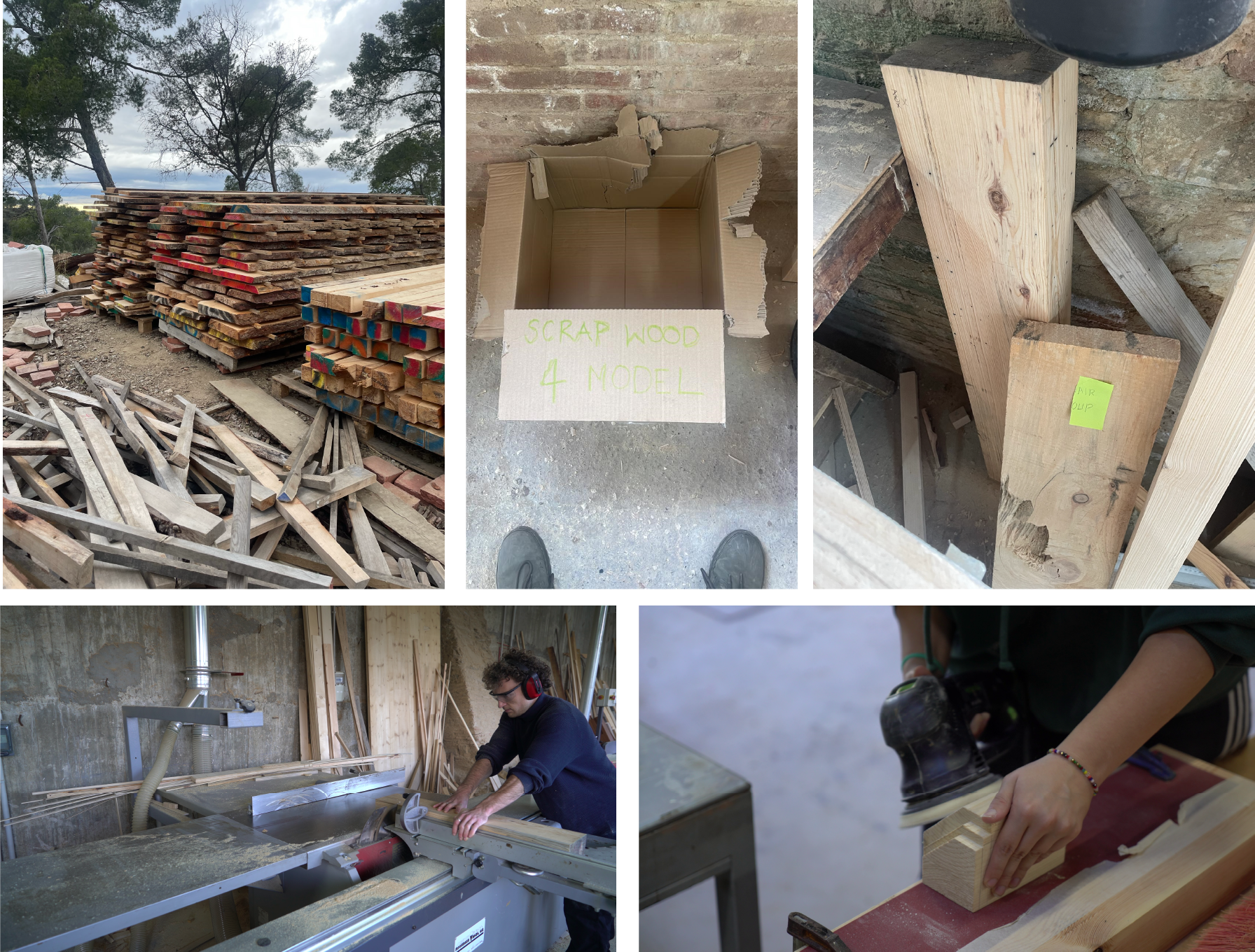
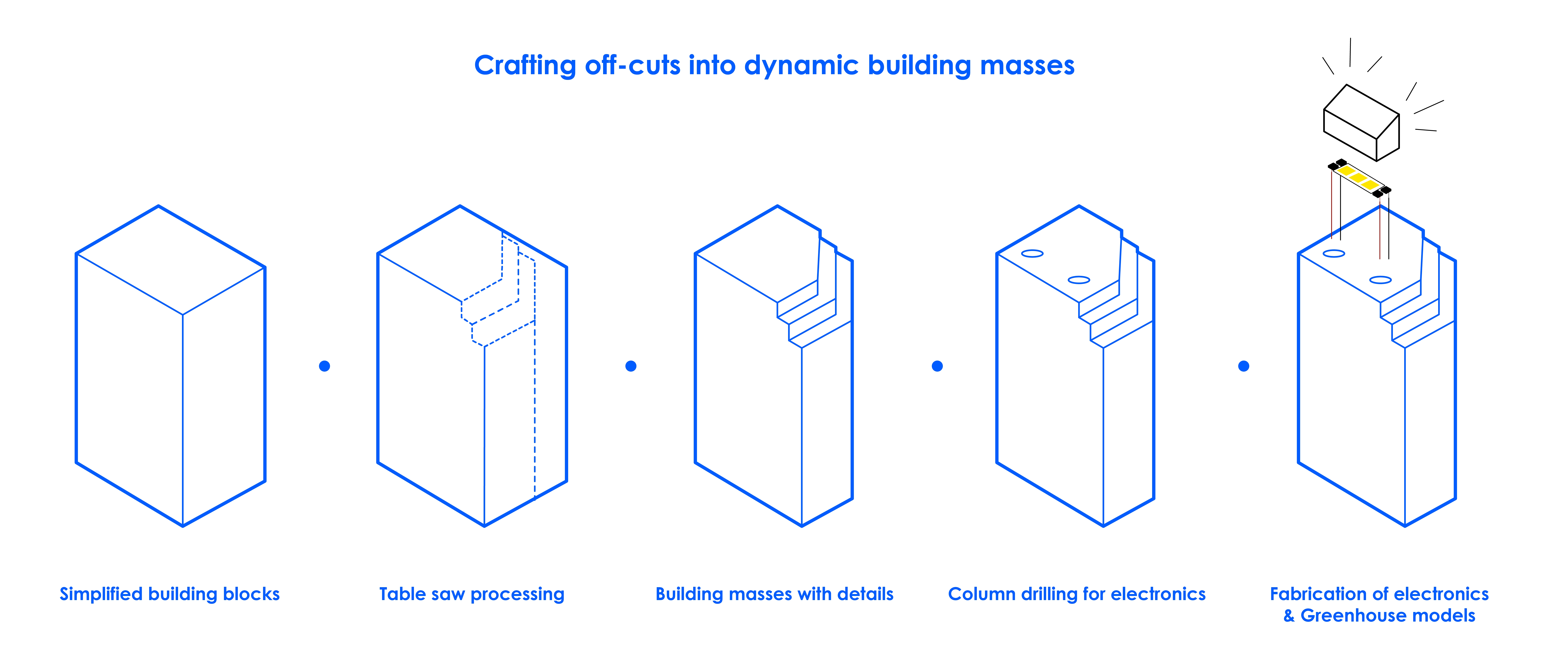
Once the blocks were prepared, they were collected, finished and assembled onto our CNC plate footprint of the Eixample block address. Care had to be taken both in the execution of cuts and in the assembly on our footprint – mistakes or material tolerances on scale models are difficult to hide and impact the overall impression of the finished piece.

Once our Blocks were assembled, careful alignment of mounting holes and cable routing were completed so the building models could accommodate LED’s, the required circuitry and 3D printed greenhouse models.
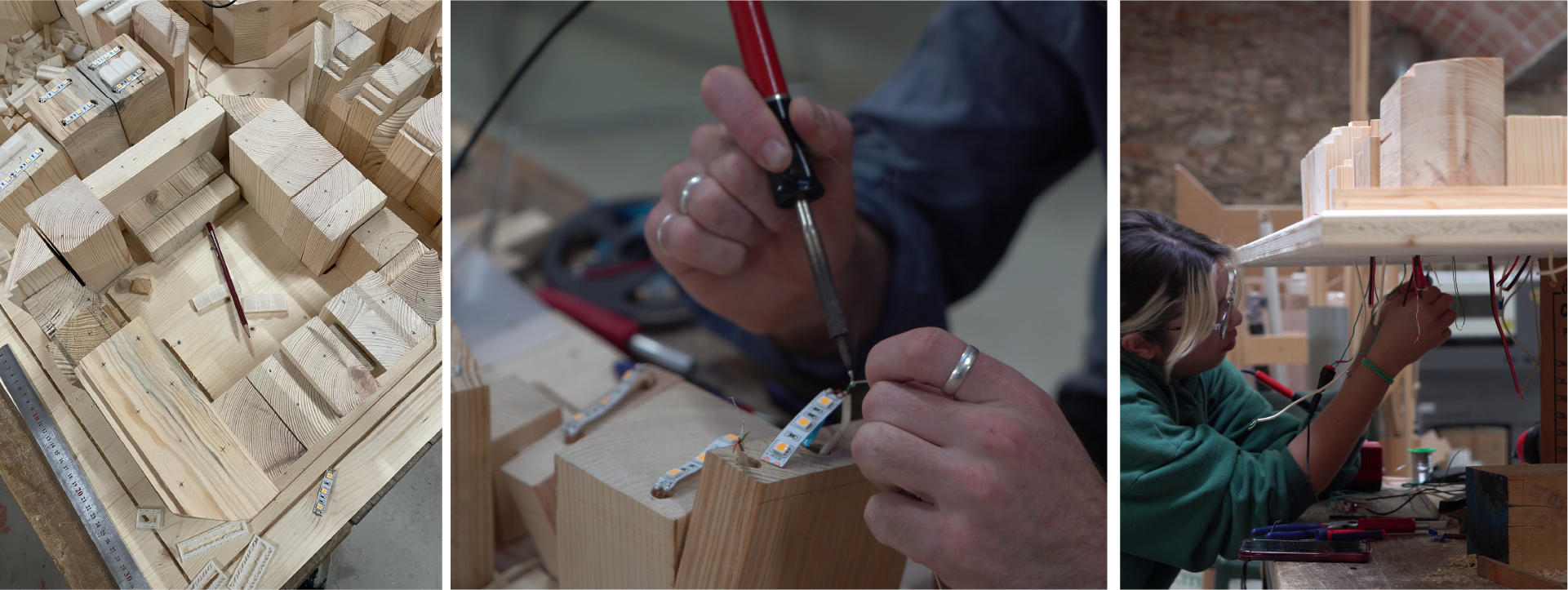
The final stage involved illuminating our Greenhouse models – a captivating and useful abstraction of the urban agriculture potential at a scale which otherwise limited model detail. Multiple tests of lighting material & methodology were completed before settling on 5V LED strip lighting, mounted directly beneath 3D printed models. This approach gave us controllable lighting intensity and colour.
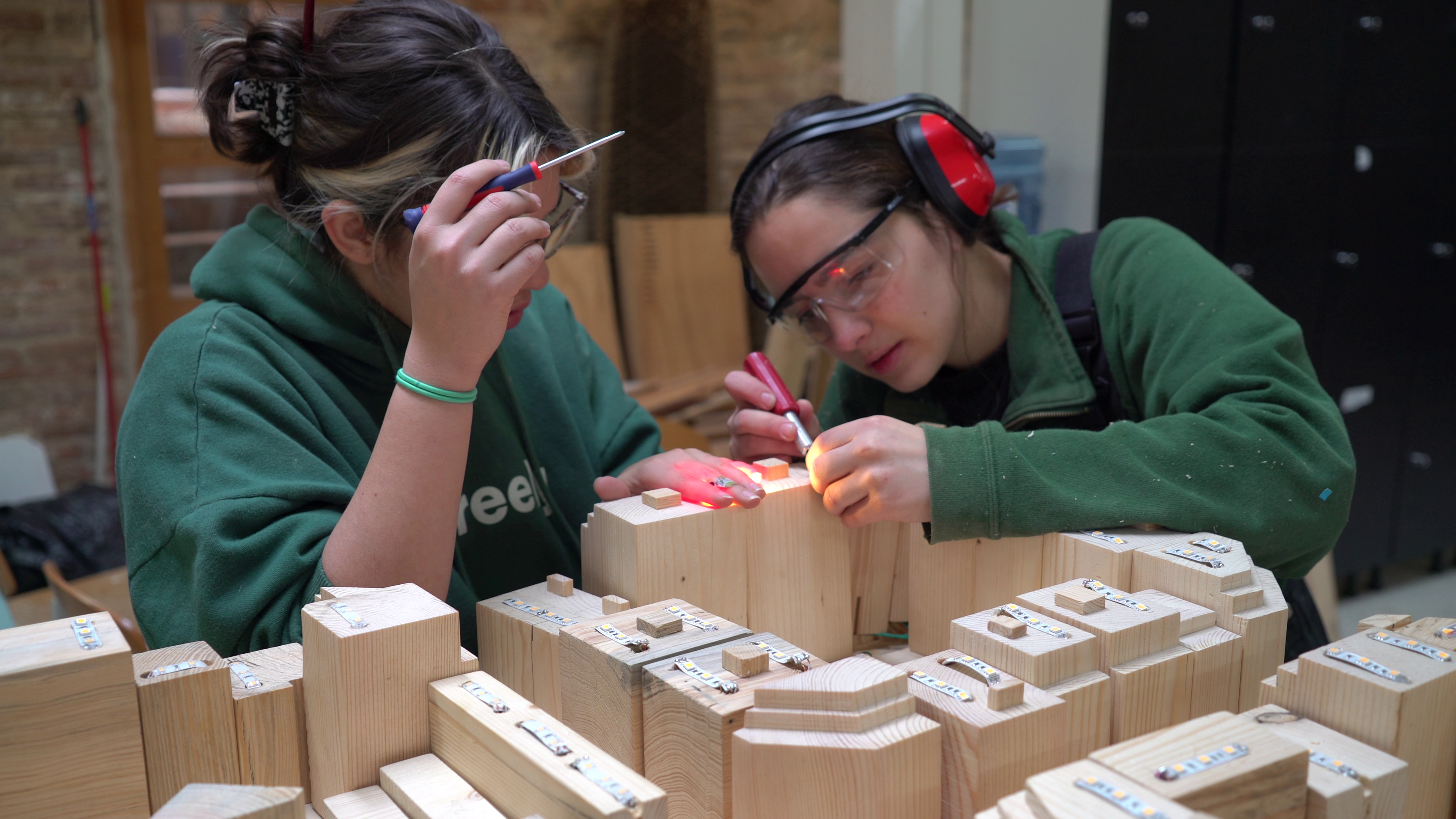
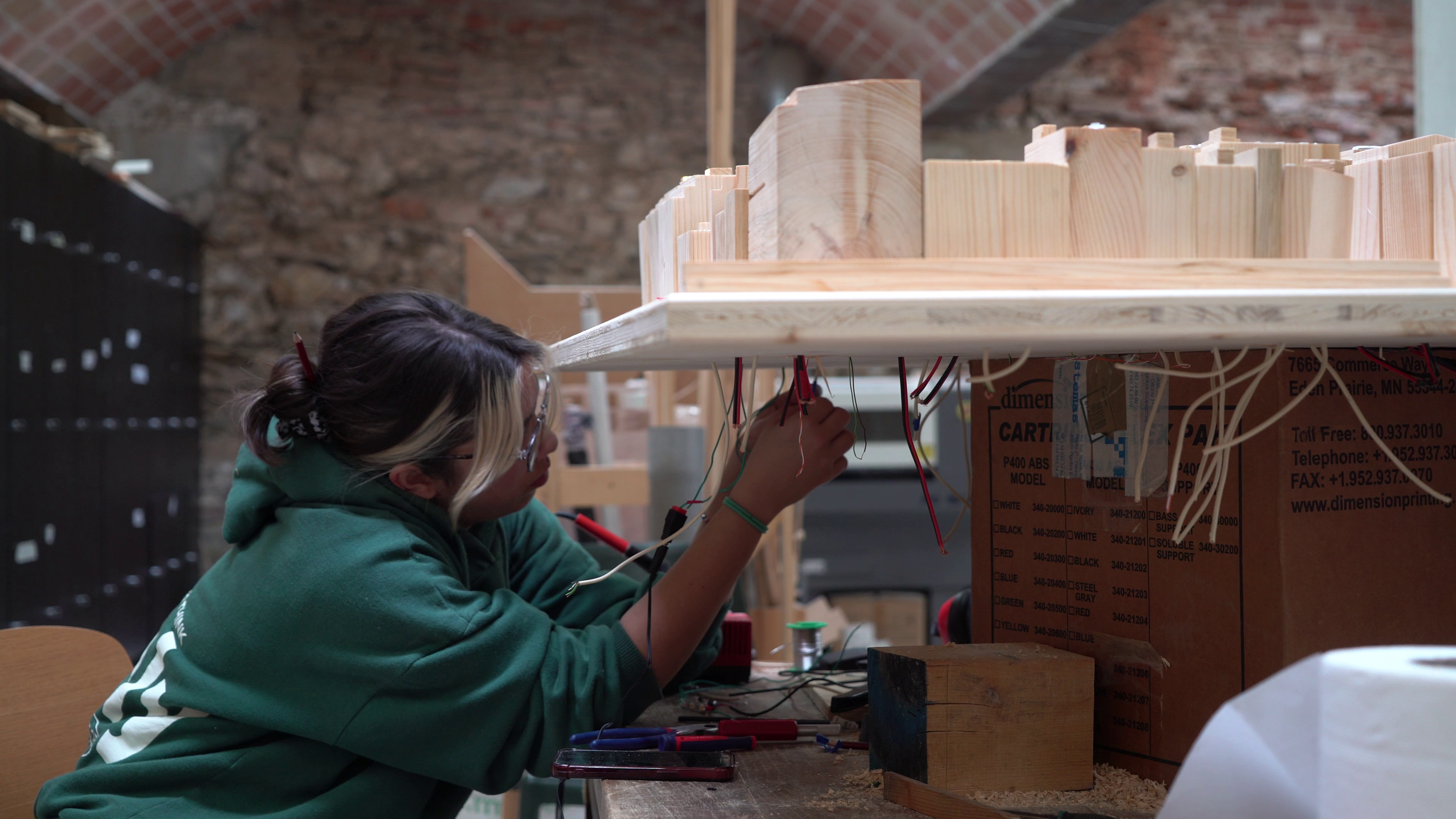
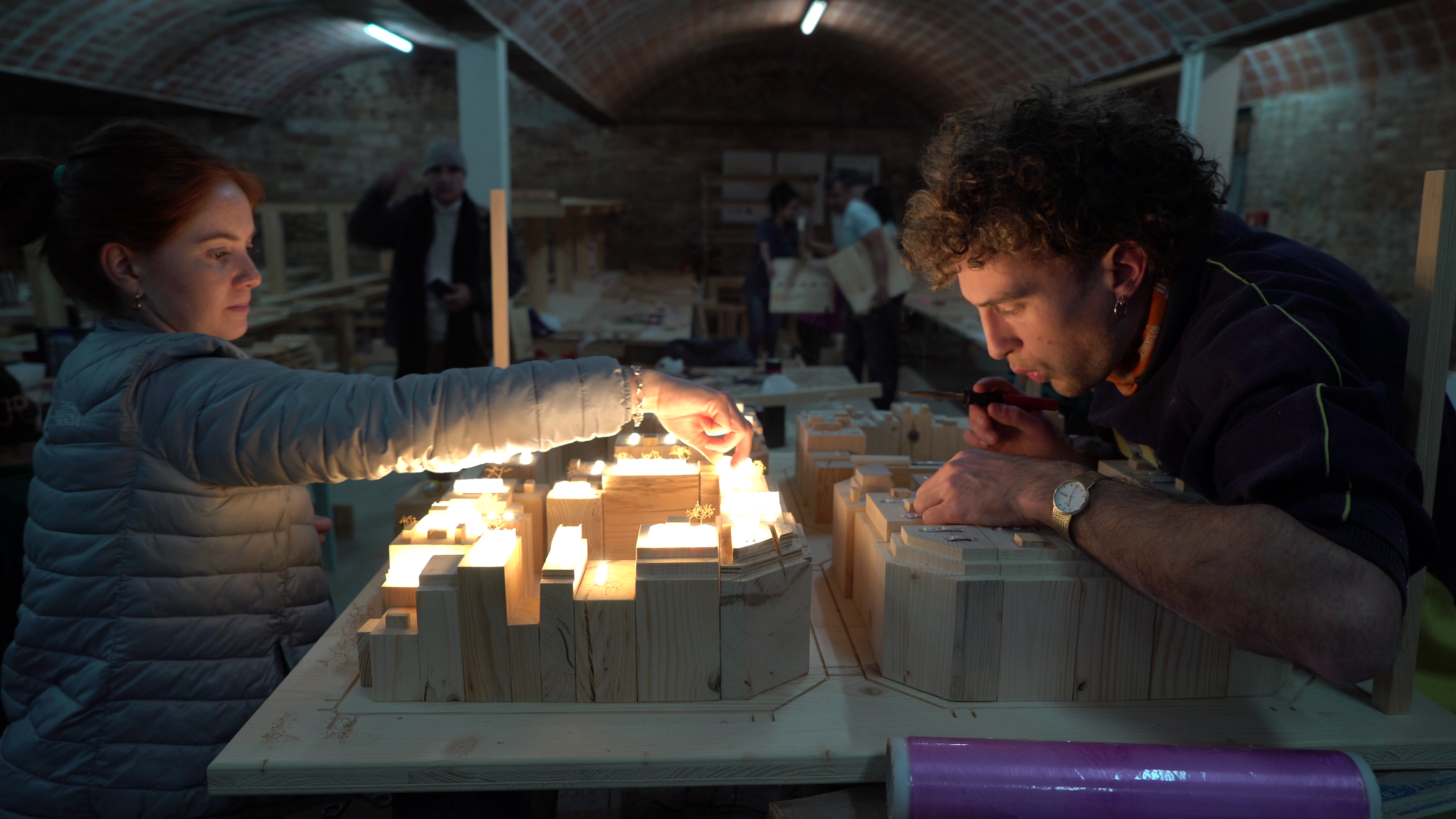
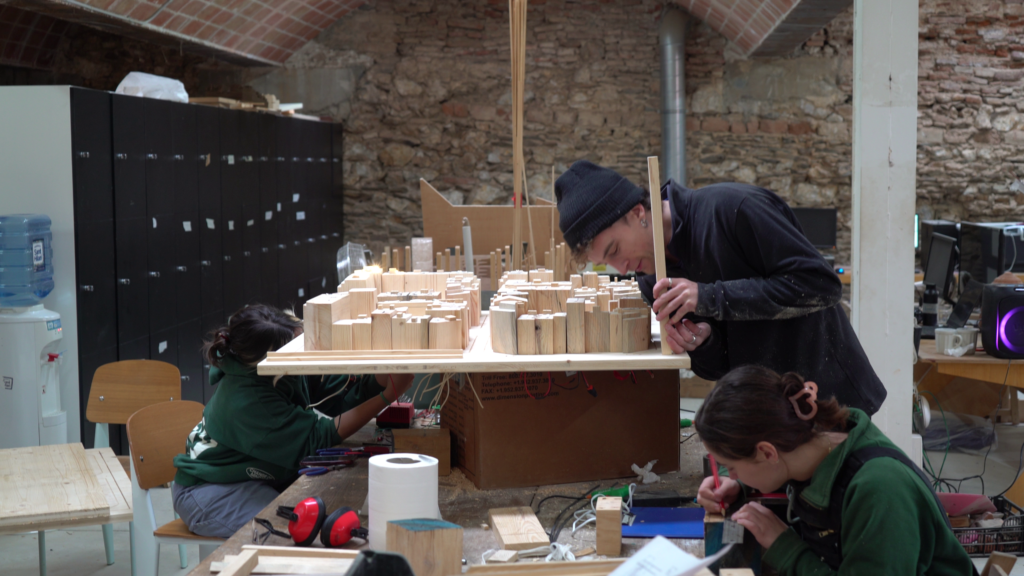
Another crucial phase of this project was the fabrication of the rooftop greenhouses. Various methods were explored to produce these typologies. We first looked at laser cutting acrylic sheets into several layers that would then be glued together with green plastic pieces in between each layer, creating an illusion of greenery inside the greenhouse. These resulted in a diagramatic representation of what greenhouses can do. With this same technique, we also laser cut thin wood material to create different urban farming strategies like horizontal garden beds, vertical growing structures, and general green items such as trees.

Lastly, we prototyped different types of greenhouses with the 3D printer. This method demonstrated to be the best for representing greenhouses at the scale of 1:300. By using translucent filament, we had the opportunity to also implement LED lighting systems and elevate the overall look of the urban rooftops. Whilst the results of the 3D printer were great, the limitations of the printer made the process of printing the necessary quantities a difficult task – one familiar to other Fab Labs who have limited facilities and large demand.
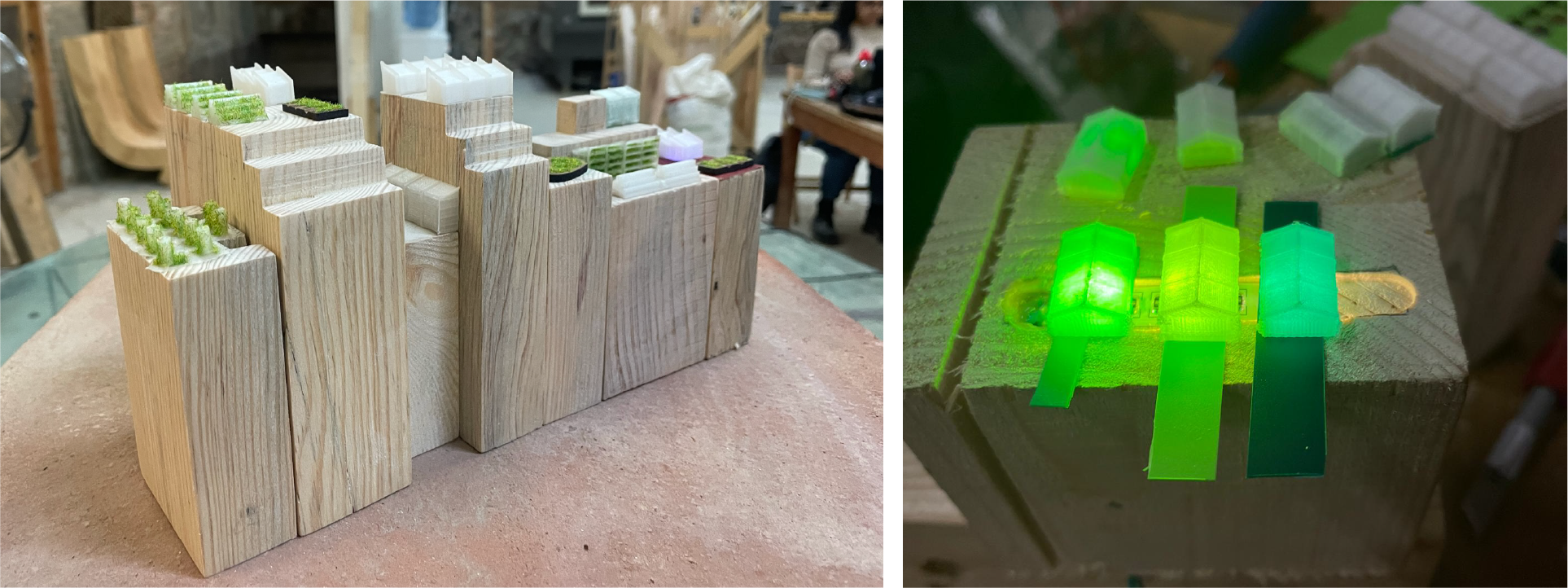
The final result is a 1:300 scale model which provides a captivating and informed provocation of urban agriculture on Barcelona rooftops. The model shares to the general public a vision of what the Eixample district might look like with greenhouses atop the roofs, and hopes to inspire the city to look into such solutions. Our model explored a huge variety of the available facilities and tools at the Valldaura Fab Lab, and gives our team a solid foundation of craft and familiarity with both the process and characteristics of our primary building material: Pinus Halepensis.
